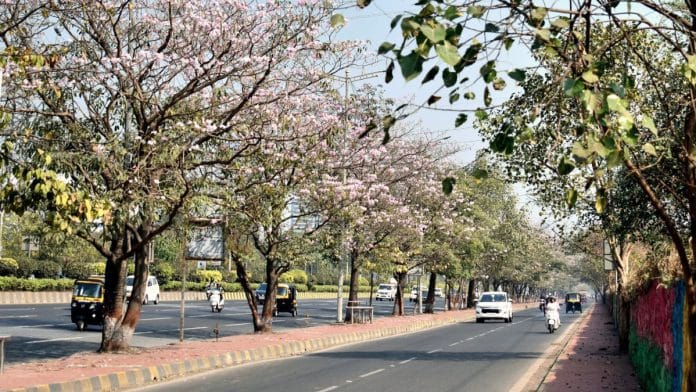New Delhi: Octobers in north and central India are getting warmer and are expected to get worse in the coming years with meteorologists and scientists warning that fewer western disturbances, unpredictable rains during the monsoon season, and the larger impacts of climate change and changing weather patterns are to blame.
Officials from the India Meteorological Department (IMD) said that most parts of the country are expected to record higher-than-normal rainfall this October. But at the same time, the temperatures are also forecast to be above normal.
“Above-normal maximum temperatures are likely over most parts of the country except some parts of central India and adjoining south peninsula where normal to below normal maximum temperatures are likely,” IMD said in its forecast Monday.
Along with high daytime temperatures, the minimum temperatures are also predicted to be higher than usual.
A usual occurrence or a larger trend?
Usually, temperatures tend to rise briefly in October when the southwest monsoons withdraw from most parts of India before the winter winds start setting in.
“When southwest monsoon retreats, it is normal for the temperatures to rise. By the second or the third week of October, we will see the temperatures falling,” explained IMD director general M Mohapatra.
Mohapatra said the first week of October is normally a “transitionary period”.
The monsoon clouds retreat, paving the way for the surface to get direct sunlight—therefore warming up the region. The colder northerly and northwesterly winds also have yet to set in.
However, scientists say, the trends show that, over the last few years, temperatures recorded during the month have been much higher than normal and it seems 2024 will be no exception.
Last week, which marked the beginning of October, Delhi’s Safdarjung observatory—the representative station for the national capital—the maximum temperatures ranged between 35 degrees Celsius and 38 degrees Celsius, 3-4 degrees above the city’s normal temperature records.
Nighttime, or minimum temperatures, have also consistently exceeded normal—the 25-degree Celsius mark.
The larger trend of warming in October
Independent scientists say that, despite being a transitionary month, October is warming at a worrying rate. Climate change is leading to extreme weather recordings and shortening transitionary months. For instance, last year, the maximum temperature in Delhi between 1 and 10 October remained above 35 degrees Celsius.
In Mumbai, IMD’s regional centre warned Sunday of the onset of the unusual ‘October heat’ phenomenon whereby dry easterly and northeasterly winds after monsoons bring the temperatures up to 30-35 degrees Celsius. The sudden heat clubbed with high humidity can increase discomfort among residents.
Mahesh Palawat, vice-president (meteorology and climate change) at Skymet Weather, a private weather forecasting service, said that a primary reason behind higher-than-usual temperatures this time of the year is the region’s reduced number of western disturbances— a weather system that brings non-monsoon rains in India.
“There are no western disturbances in sight till November. We are also currently receiving westerly and southwesterly winds, which are also keeping the temperatures high,” Palawat said.
However, climate change also plays a role.
He said, “But if you generally look at the trend, the larger climate change impacts are making Octobers warmer. We are seeing that transitionary months like February-March and October-November are no longer as pleasant as we remember it to be. These are also recording high temperatures.”
(Edited by Sanya Mathur)
Also Read: Modi govt’s Rs 2,000 cr ‘Mission Mausam’ is ambitious. It comes with a ‘conditions apply’ clause






